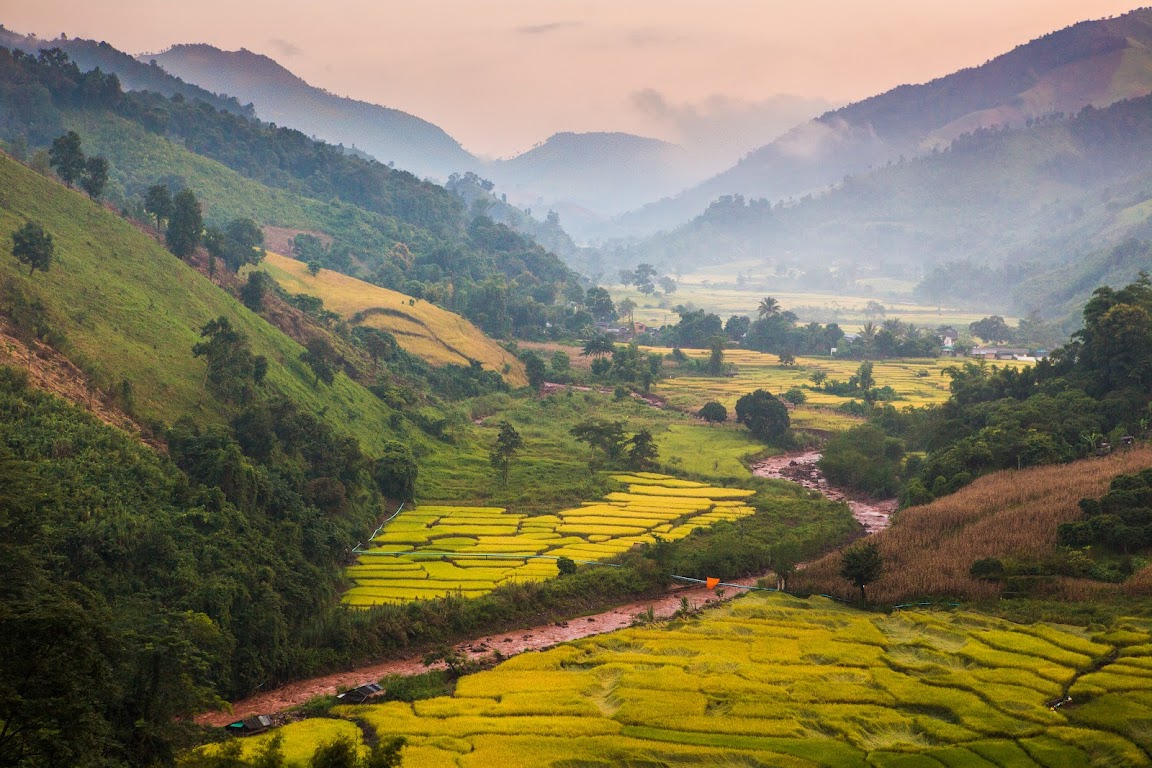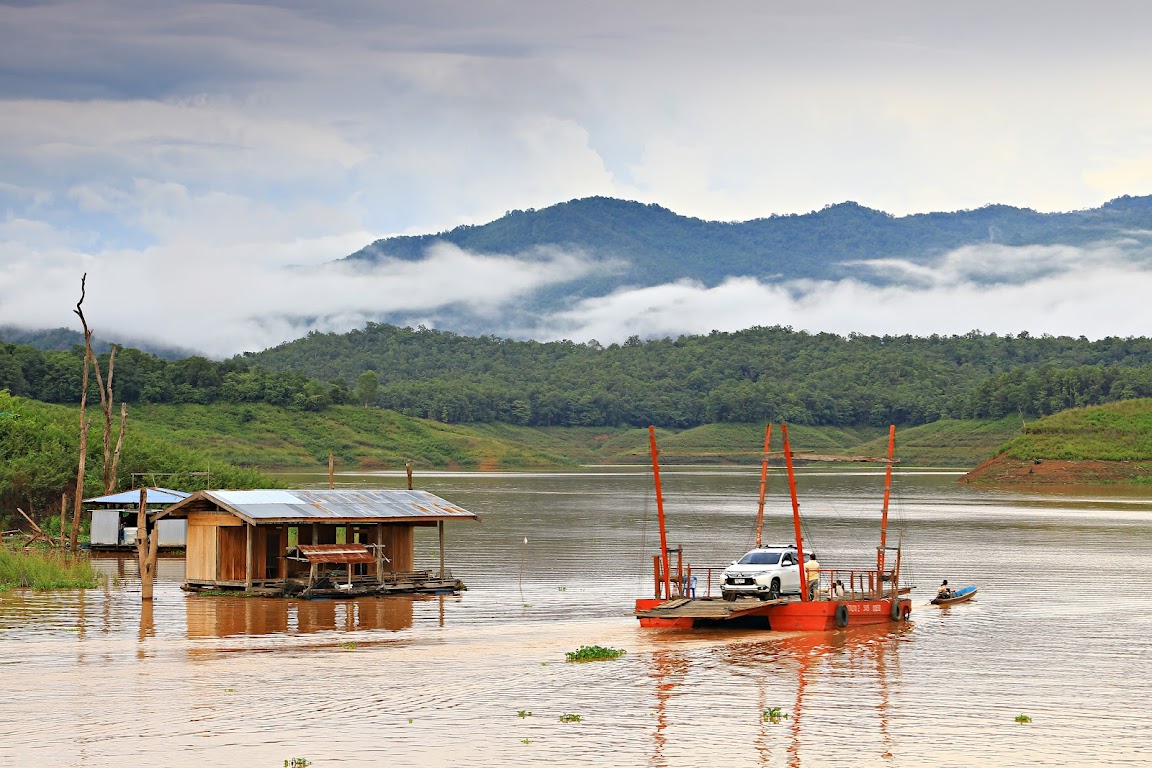The Nan River
8474 Views |

Nan River flows through Na Noi District, Nan Province at Si Nan National Park.
The Nan River is a river in Thailand that runs through the northern part of the country. It is a tributary of the Chao Phraya River, which is one of the major rivers in Thailand.
Originating in the Luang Prabang Mountains, Nan Province, with a length of 740 kilometers along the river, which is the longest among all the tributaries upstream of the Chao Phraya River. It is one of the main rivers in northern and central Thailand.
The Nan River Route, many community areas are located in the Nan River Basin. Many areas are historical sites that are connected to the Nan River. The order of the cities goes from the beginning of the river to the end.
The Nan River flows from Chaloem Phra Kiat District. Thung Chang District Chiang Klang District, Pua District, Tha Wang Pha District Mueang Nan District Phu Phiang District Wiang Sa District Na Noi District Passing through Na Muen District Nan Province and blocked by the Sirikit Dam at Tha Pla District Uttaradit Province. Then flows through Mueang Uttaradit District, Tron District, Phichai District, down to Phrom Phiram District, Mueang Phitsanulok District. then flows through Mueang Phichit District, Taphan Hin District, Bang Mun Nak District combined with the Yom River at Tambon Kei Chai, Chum Saeng District, Nakhon Sawan Province and then flows into the Ping River at Khwae Yai Subdistrict Mueang Nakhon Sawan District, Nakhon Sawan Province is the Chao Phraya River
The Nan River holds significant importance to Thailand in various aspects. Here are some reasons why the Nan River is important to the country
Water Supply The Nan River serves as a crucial water source for irrigation and agriculture in northern Thailand. It provides water for farming activities, ensuring the fertility and productivity of agricultural lands in the region. This is especially important for rice cultivation, which is a staple crop in Thailand.
Economic Value The river supports the livelihoods of local communities along its banks. It facilitates fishing activities, providing a source of income and food for many people. Additionally, the river serves as a transportation route for trade and commerce, enabling the movement of goods and supporting local economies.
Biodiversity and Ecosystem Services The Nan River and its surrounding ecosystems are home to diverse flora and fauna. The river supports a range of aquatic species, including various fish species. It also contributes to the overall ecological balance in the region, providing habitats for numerous plant and animal species. The river and its associated wetlands offer important ecosystem services, such as water purification, flood mitigation, and erosion control.
Cultural and Historical Significance The Nan River holds cultural and historical significance for Thailand. It has played a vital role in shaping the lives and traditions of communities living along its banks. The river has witnessed the growth of ancient civilizations and served as a transportation route for trade and cultural exchanges. It is often celebrated in local folklore, songs, and festivals, reflecting its cultural importance.
Tourism and Recreation The Nan River attracts tourists and visitors who seek to experience its natural beauty and engage in recreational activities. River cruises, kayaking, and fishing are popular activities along the river. The scenic landscapes and cultural attractions along its banks contribute to the tourism industry in Thailand, providing opportunities for economic growth and employment.
Given these reasons, the Nan River holds significant importance to Thailand in terms of water supply, economic activities, biodiversity conservation, cultural heritage, and tourism. The river's well-being and sustainable management are crucial for the overall well-being of the region and its communities.

Pictures of the traditional long boat race in Nan Province.
The Nan River generates income for local people through various means. Here are some ways in which the river contributes to the economic well-being of the communities
Agriculture and Farming, The Nan River provides water for irrigation, which is essential for agricultural activities. Farmers rely on the river's water to irrigate their crops, particularly for rice cultivation. The fertile soils along the riverbanks, coupled with the availability of water, support the growth of crops, resulting in increased agricultural productivity. The agricultural products, such as rice, vegetables, and fruits, contribute to the local economy by providing a source of income for farmers and supporting the agricultural supply chain.
Fishing and Aquaculture, The Nan River supports fishing activities, which serve as a source of income for local fishermen. The river is home to various fish species, and fishermen rely on its resources to catch fish for sale and local consumption. Additionally, aquaculture practices, such as fish farming, are also conducted in the river, providing opportunities for farmers to cultivate and sell fish, further generating income.
Tourism and Recreation, The Nan River's scenic beauty and cultural attractions draw tourists and visitors, contributing to the local economy. Tourists engage in activities such as river cruises, kayaking, fishing, and exploring the river's surroundings. This creates opportunities for local businesses, including tour operators, boat rentals, accommodations, restaurants, and souvenir shops, which generate income for the local people.
Transportation and Trade, The Nan River historically served as a transportation route, and even today, it facilitates trade and commerce. The river enables the movement of goods, people, and services, connecting communities and contributing to local trade activities. Local boat operators and ferry services provide transportation services, generating income for individuals involved in these businesses.
Handicrafts and Local Industries, The presence of the Nan River has influenced the development of local industries and handicrafts. Communities along the river often engage in traditional crafts, such as pottery, weaving, and bamboo crafts, which are often sold to tourists and visitors. These local industries provide income-generating opportunities and preserve traditional cultural practices.
Riverfront Businesses, The riverfront areas along the Nan River serve as attractive locations for restaurants, cafes, guesthouses, and other businesses. The scenic views and proximity to the river create a favorable environment for such establishments, which cater to both locals and tourists. These businesses generate income and employment opportunities for the local population.
The Nan River's contributions to agriculture, fishing, tourism, transportation, local industries, and riverfront businesses all play a role in generating income for the people living in its vicinity. The river's resources and natural beauty provide opportunities for economic activities and contribute to the overall well-being of the local communities.

Atmosphere (rainy season), Origin of the Nan River.
at Bo Kluea District, Nan Province.

Nan River flows through Na Noi District, Nan Province
at Si Nan National Park.

Ferry service across the river at Pak Nai Fishing Village, Na Muen District,
between Nan and Uttaradit Provinces.







